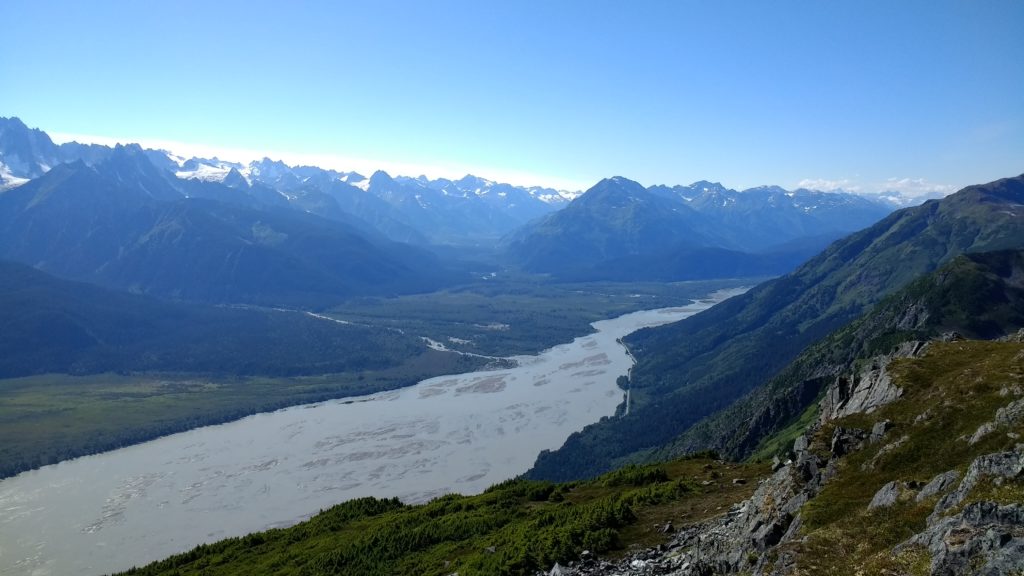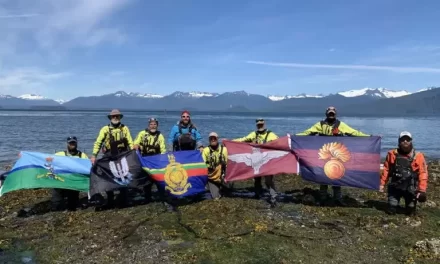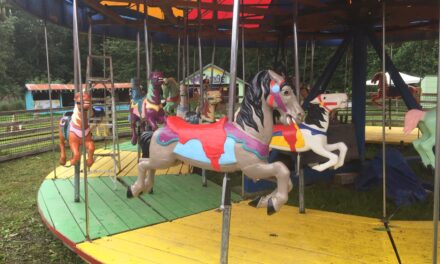
The Chilkat River as seen from Mount Ripinsky in summer of 2017. (Emily Files/KHNS)
Constantine Metal Resources updated the technical report for its potential mining project. The new information raises questions around how the company plans to get ore out of the Chilkat Valley.
Constantine Metal Resources revised its technical report earlier this month after a review by the British Columbia Securities Commission. The report adds more details on how the company proposes to get ore from the upper Lynn Canal to Asian markets.
Constantine President and CEO Garfield McVeigh called the updates housekeeping. He says the company is currently focused on determining whether the mine is viable, then developing infrastructure.
“We don’t need an ore loading terminal until we know the project is going to be feasible,” McVeigh said. “And that’s still, you know, down the road. As they say, it’s probably five years before we’re at feasibility. So we ourselves would not build an ore loading facility until we knew the project was economic.”
Constantine’s Palmer Project is still in the exploratory stages to mine gold, copper, zinc and barite at a site near the US-Canadian border, at the headwaters of the Chilkat Valley. It’s roughly 12 miles upstream of Klukwan, and 35 miles north of Haines.
In the report, Constantine proposes zinc and copper concentrate trailers are trucked to Haines’ deep water port facility owned by Alaska Marine Lines, or AML. AML provides twice weekly barge service delivering goods to upper Lynn Canal communities. The company proposes containers then be barged by AML roughly 15 miles to Skagway’s port, transferred at the ore terminal there, and loaded onto barges destined for smelters in Asia.
The report also points to the need for future evaluations on the potential for Constantine to that a trade-off evaluation should be conducted to “to assess the potential to construct a company-owned port facility and/or concentrate loading facility.”
But Haines does not have an ore terminal. Plans to develop one are highly controversial in the community, drawing environmental and economic concerns, debated in town halls, letters to the editor, and social media. Though Haines received a $20 million federal grant in December to rehab its freight and fuel dock, Lutak Dock, an ore terminal is not currently part of that redevelopment project.
Haines Mayor Douglas Olerud says the plan has potential, but it’s too soon to evaluate.
“We’re probably at least 10 years away from them (Constantine Metal Resources) developing the ore bodies for shipment,” Olerud said. “And so everything that they’re producing out there is liable to change between now and when they’re actually shipping ore. And so I think it’s a plan that could definitely work, but I imagine there’s going to be changes to that as they get to the point where they’re transporting ore. And once they get to that stage, it’ll be a much more refined plan.”
Olerud says moving concentrate containers could be feasible via Haines’ roll on roll off ramp. But an ore terminal facility would have to be constructed on an adjacent property to Lutak Dock.
In Skagway, the ore terminal currently owned by the Alaska Industrial Development and Export Authority, or AIDEA, will be turned back over to the municipality next year, in March 2023. AIDEA announced they would not be renewing their lease.
Skagway Mayor Andrew Cremata says the municipality is in negotiations with Yukon mining executives in their port redevelopment process. But he has not had any recent communications with Constantine about their proposal.
“So it’s interesting to me that another entity would put out a report that their intent is to use our port,” Cremata said. “And not having engaged in any kind of conversation about what their needs might be, or how it might logistically work, or really anything.”
He says interested industry must be an active partner with Skagway.
“We’re always willing to have a conversation with potential partners, but not really knowing what their intentions are, makes it difficult for us to really do any planning with them in mind.”
Earlier this month, White Pass and Yukon Railroad began a long awaited dredging project in Skagway’s harbor, to begin clean of lead and zinc contamination beneath its ore terminal.
Alaska Marine Lines declined to comment about Constantine’s proposed barging plan.
Environmentalists say the company has had to change its public reporting before around road access, following a complaint filed with the BC Securities Commission and a subsequent review by Canadian regulators.
Chris Zimmer is with the conservation group, Rivers Without Borders, and says this latest update could be a result of regulatory pressure. He criticized Constantine for waiting to benefit from publicly-funded infrastructure projects.
“So, this kind of smacks to me of corporate socialism,” Zimmer said. “If this company is sitting in waiting for the government to basically build them a transportation plan because they can’t afford to do it themselves. And this is a weak point for the company. If they can’t get their product to market, you’re not going to have a successful mine. And as it stands, they do not have any kind of approved workable plan to get their product to market.”
Constantine is partnered with Dowa Metals and Mining Company of Japan, who has invested $22 million in the mineral exploration project to date. The report states the Palmer Project has yet to determine mineral reserves and economic viability.
Constantine President McVeigh says there’s more advanced underground exploration to come. He says the company is in the process of applying for permits for the next stage exploration with the state Department of Environmental Conservation in the next few months.
To see the updated report dated March 11, 2022, go to sedar.com and search for Constantine.








